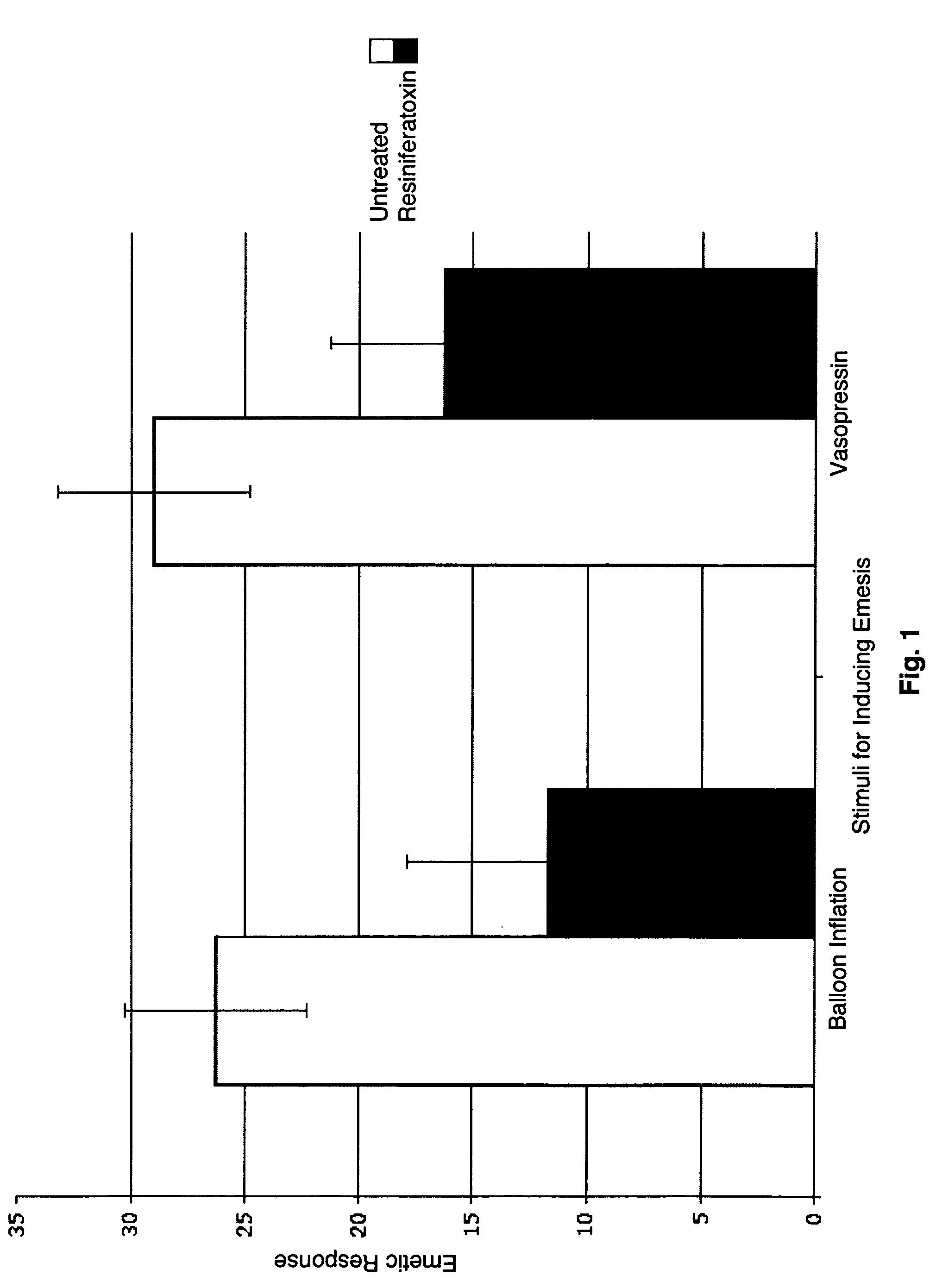Antagonists of the transient receptor potential vanilloid 1 and uses thereof
a transient receptor and potential antagonist technology, applied in the field of gastro-intestinal disorders, can solve the problem of deficient knowledge in the prior ar
- Summary
- Abstract
- Description
- Claims
- Application Information
AI Technical Summary
Problems solved by technology
Method used
Image
Examples
example 1
[0022]4 dogs with surgically created jejunocutaneous fistulae 20 cm distal to the pylorus were used in this study. Nausea and vomiting were induced using two different stimuli, both of which are vagally dependent, at least in part: (1) Balloon inflation in the jejunum (2) Intravenous vasopressin infusion (0.5 U / Kg infused over 20 minutes). Nausea was assessed using a previously validated behavioral scoring system in addition to counting actual episodes of vomiting. After baseline observations, resiniferatoxin (250 ml of a 100 nM solution) was administered endoscopically using a spray catheter to coat the mucosal lining of the stomach under general anesthesia into the stomach. One week later, the response to balloon distention and vasopressin infusion was recorded again.
example 2
[0023]Resiniferatoxin infusion resulted in marked attenuation of nausea and vomiting to both stimuli: the mean score with balloon distention decreased from 26.3±4.0 to 11.7±4.2 (p=0.01) while the mean score with vasopressin decreased from 29.0±6.2 to 16.3±5 (p=0.05). Dogs appeared healthy although minor weight loss was observed. Thus, the present invention demonstrates that TRPV1-dependent pathways play a major role in the pathogenesis of nausea and vomiting and topically applied resiniferatoxin may be potentially beneficial in patients with intractable nausea in conditions such as gastroparesis.
PUM
| Property | Measurement | Unit |
|---|---|---|
| resistance | aaaaa | aaaaa |
| anatomical area | aaaaa | aaaaa |
| weight loss | aaaaa | aaaaa |
Abstract
Description
Claims
Application Information
 Login to View More
Login to View More - R&D
- Intellectual Property
- Life Sciences
- Materials
- Tech Scout
- Unparalleled Data Quality
- Higher Quality Content
- 60% Fewer Hallucinations
Browse by: Latest US Patents, China's latest patents, Technical Efficacy Thesaurus, Application Domain, Technology Topic, Popular Technical Reports.
© 2025 PatSnap. All rights reserved.Legal|Privacy policy|Modern Slavery Act Transparency Statement|Sitemap|About US| Contact US: help@patsnap.com

